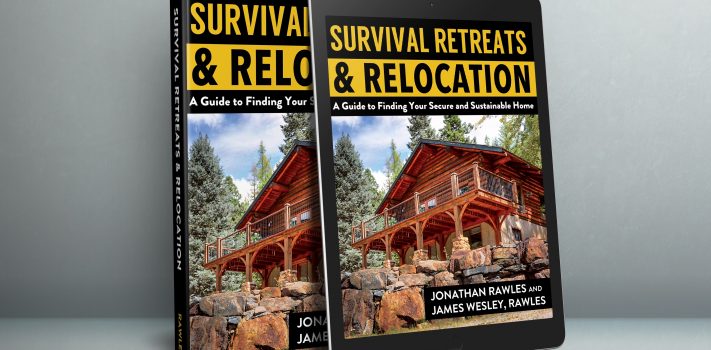“Survival Retreats & Relocation” [by Jonathan E. Rawles and James Wesley, Rawles] uses a systems engineering approach to provide the reader a process and framework for acquiring and thriving a survival retreat. Let me start this review by stating the authors view survival through a politically and religiously conservative American lens. If that causes you offense, no need to read further, this book isn’t for you. That said, there’s a wealth of material in this book that anyone, anywhere can learn from.
In Part 1, the authors start by defining the principles of survival, which are expanded in a detailed Appendix. Next, comes a well-reasoned set of issues for the reader to consider such as: liberty, security, food, water, community. Each issue is supported with facts and sources that let the reader dig deeper. The reader is provided a sample set of criteria to use as a baseline to develop their own location criteria. This set of criteria is going to vary for each reader; each person is going to make their own trades based on the starting points desired by the authors. The final section of Part 1 asks the reader to consider how self-sufficient and how isolated they want their retreat to be.
Next, provide their assessment of possible relocation areas within the USA. They start with a chapter on regions, then a chapter with a state-by-state analysis. Finally, they provide a chapter with detailed analysis of retreat locales based on their expert assessment. The maps alone are worth the cost of the book in my opinion. It was interesting to see that some of my favorite places to explore in the Western US are charted on these maps along with some new places to explore.
Part 3 is a guide to the logistics of relocation. There’s a lot of nitty-gritty detail. The initial chapter explains how to search for a retreat Next, their are two well-researched chapters on developing initial criteria for acquiring their land and home. To be truly useful, each reader needs to develop and rank their own set of criteria. In doing so, the reader needs to consider the maxim: “Perfect is the enemy of good enough.” There are always going to be tradeoffs.
The last part of the book has two chapters that provides food for thought on setting up and then stocking a retreat location. The last chapter is a single page checklist which is an overall framework of the relocation process; from making the decision to relocate to moving in. There are also six appendices. Two that I found useful to me were “Precepts of Survival” and “Retreat Owner Profiles”. Finally, there is a useful bibliography.
I found this book to be very useful to me. It is the best book I have read on this topic and has made me reevaluate where I want to live in the future. I know I will spend more time with this book and have started my own location criteria. For me, this is not a quick, light reading book. Instead, it’s much more like a textbook with homework problems for the student. I would highly recommend this book for anyone considering moving to a more secure, self-sufficient location.
One caveat, this review is of the Kindle edition. I found it much easier to read the full-page book on the high resolution screen of my iPad. I was able to read on my Fire HD8 color but it was more challenging, especially viewing the maps. I also ordered a couple of print copies to give to friends that will benefit from this book.










